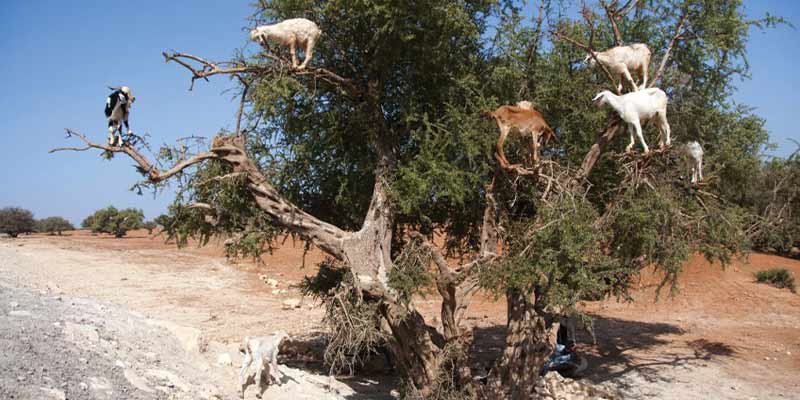- World
- May 10
Explainer - International Day of Argania
• The argan tree is an endemic woodland species found in the Arganeraie Biosphere Reserve in southwest Morocco. Rural women and, to a lesser extent, men living in the reserve practise traditional methods to extract argan oil from the fruit of the tree.
• This unique region, where argan trees have been cultivated for centuries combines agricultural biodiversity, resilient ecosystems and valuable cultural heritage. For that reason, it has gotten recognition and protection from various UN entities.
• In 2021, the United Nations General Assembly proclaimed May 10 as the International Day of Argania.
• The resolution, submitted by Morocco, was co-sponsored by 113 member states of the United Nations and adopted by consensus.
• The United Nations Educational Scientific and Cultural Organisation (UNESCO) designated in 1988 the endemic production area as the Arganeraie Biosphere Reserve.
• Also, all know-how concerning the argan tree was inscribed in 2014 on the UNESCO Representative List of the Intangible Cultural Heritage of Humanity.
The multifaceted argan tree
• The argan tree (Argania spinosa) is a native species of the sub-Saharan region of Morocco, in the southwest of the country, which grows in arid and semi-arid areas.
• It is the defining species of a woodland ecosystem, also known as Arganeraie, which is rich in endemic flora. It is resilient to a harsh environment under water scarcity, risk of erosion and poor soils.
• This ecosystem of extraordinary beauty is not only important in terms of conservation, but also for research and socio-economic development, due to its forestry, agricultural and livestock use.
• This unique tree withstands temperatures of up to 50°C and plays an irreplaceable role in the ecological balance of the region.
• The argan tree is also known as the “tree of life”.
• The argan tree woodlands provide forest products, fruits and fodder.
• The leaves and the fruits are edible and highly appreciated, as is the undergrowth, and constitute a vital fodder reserve for all herds, even in periods of drought.
• The trees are also used as fuelwood for cooking and heating.
• The argan tree is typically a multipurpose tree that supports income generation, increases resilience and improves climate adaptation, playing a very important role in achieving the three dimensions of sustainable development — economic, social and environmental — at the local level.
The “liquid gold” of Morocco
• The world-renowned argan oil is extracted from the seeds and has multiple applications, especially in traditional and complementary medicine and in the culinary and cosmetic industries.
• Argan oil is one of the rarest oils in the world and is hailed as the “liquid gold” of Morocco. It has multiple uses in cooking, medicines and cosmetics.
• Its ability to prevent cardiovascular diseases and its benefits for the skin are scientifically recognised. Rural women lead the entire extraction process through knowledge transmitted from one generation to the next.
• It takes about 150 kg of fruit to produce 3 litres of argan oil.
Manorama Yearbook app is now available on Google Play Store and iOS App Store

